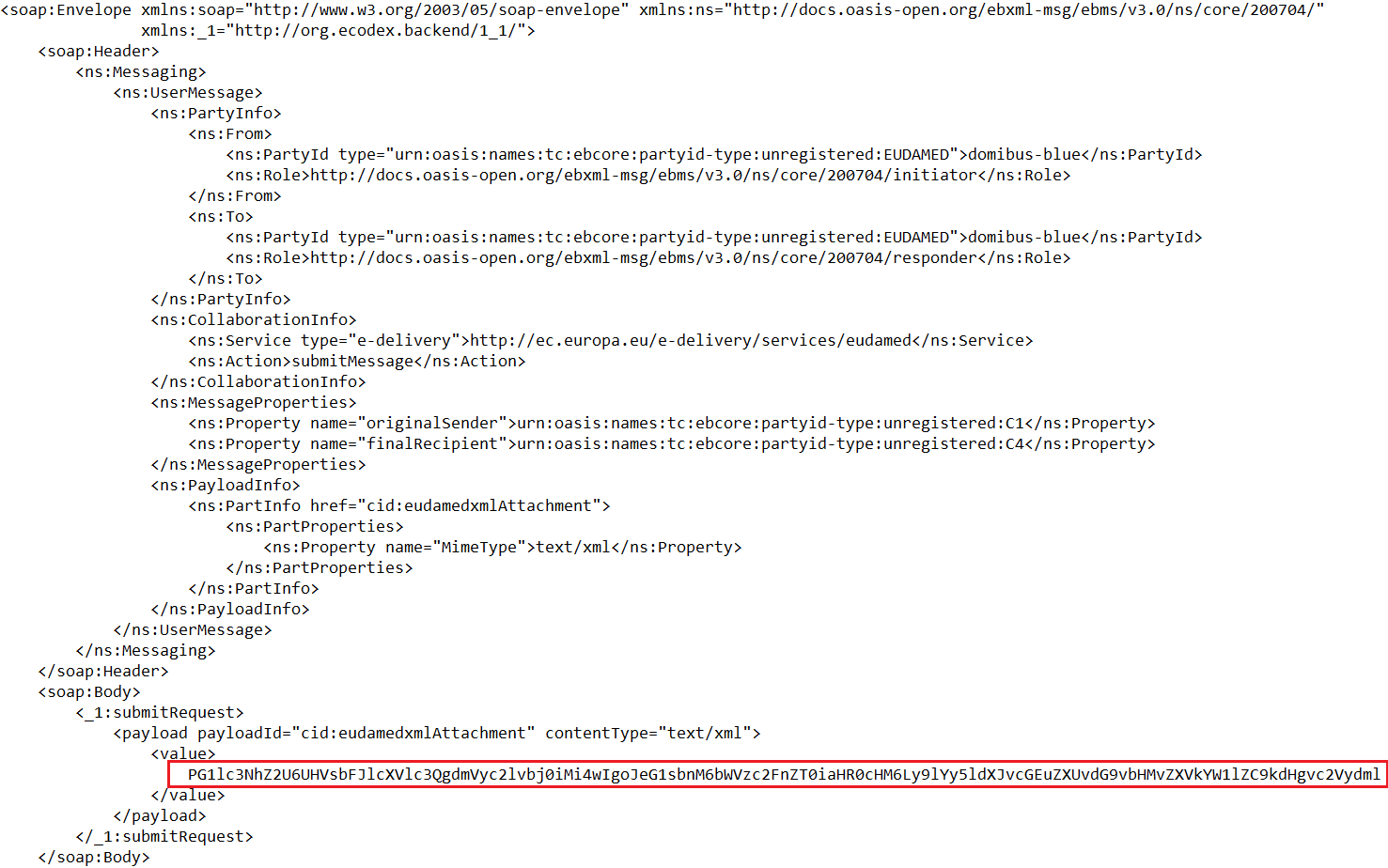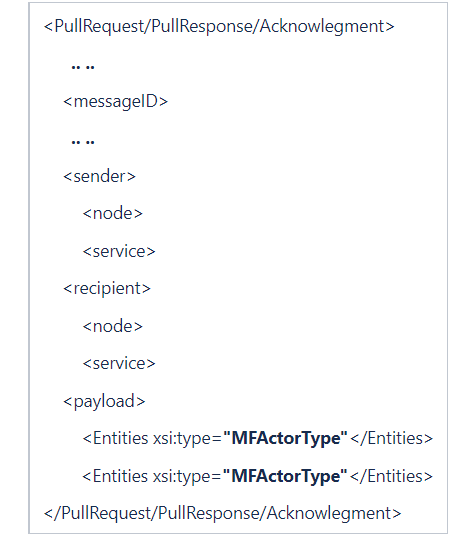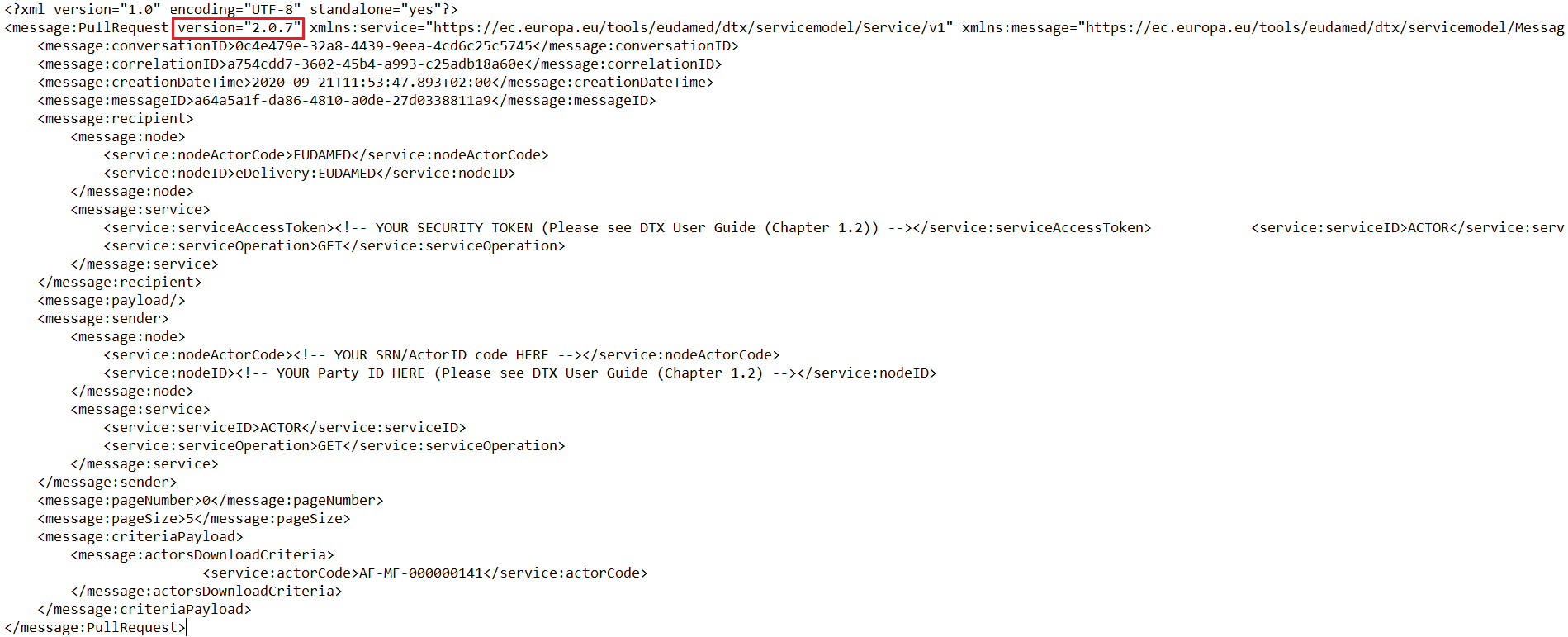Message exchange
SOAP messages will be used for data exchange. An example of a SOAP message is presented in the following image:

Important
The entire XML message must be base64 encoded. The payload element contains the encoded message. The highlighted line shows the encoded message.
A basic message structure would consist of the following main elements:

Messaging (MessageType)
Message types and related properties, such as:
Message type (Push, PullRequest, PullResponse, Acknowledge): Identification, description of the root of the messages
Payload (Criteria Payload): Canonical entities data models and related attached resources (e.g. attachments, etc.), or querying criteria
Capabilities requested/fulfilled metadata: How the information should be provided to the requester (e.g., max. delay for the request, query type, max number of entities to be provided, pagination, etc.)
Reports (ElementReportsType): How the reports should be submitted with the processing / request status in case of an initial Push or PullRequest messages.
Service definition (ServiceType)
Description of the services provided by EUDAMED:
serviceID: A unique identifier of a service in EUDAMED
serviceOperation: Supported by the service (e.g. download, upload, update, etc.)
serviceAccessToken: Bearer security authentication token (security key) to gain access permission to the requested data by the requester as EUDAMED actor or third party (acting on behalf of the actor mentioned in nodeCode)
serviceVersion: In case of multi-versioned compatible service, it allows to specify what version of the current service is invoked.
Addressing (NodeType)
Logical networking information related to the actors and AP used in DTX process:
nodeCode: Contains the EUDAMED code (e.g. SRN, CA identifier, NB code etc.) of the party that performs the call of service. In case of multi-profile endpoint (e.g. third-party companies), it contains the actor code on behalf of the request that is performed.
nodeID: Identify the requester (actor/third-party integrators) of the message eDelivery endpoint, it contains the partyID of the requester.
Important
In all your XML files you must include the version of the XSD schema that was used. You can visit Technical documentation page to check the latest version of the XSD schema in use. The version number included in your XML files must match the latest version number of the XSD schema in use, otherwise your XML files will be rejected.
The following figure displays the place that the version number must be included in the XML file.
